I fell into the same mindset that many paddlers are guilty of when it comes to buying skis. We ask ourselves how different can all these surfskis really be? Well certainly, I know the differences, the major, minor, nuances of most skis, but I put off trying the Swordfish S(SFS) despite its following among world wide paddlers. We don’t see too many SFS in New England, perhaps because we don’t have enough downwind which the SFS has built its reputation on. However, in the last year, I had some reminders that I needed to buy/review this ski.

Reminders to Review the Swordfish S
Like many paddlers, I had read all the reviews and most of the comments on the Swordfish S (SFS) including Rob Mousley’s review comparing it to the Evo 2, SEI 2G, and Nelo 550. I know all these boats intimately having had every generation of the Evo since Think was formed in 2007. I know the SEI 1G and the SEI 2G extremely well too, having launched Stellar surfskis back in 2010 and raced these boats in all conditions. I own/reviewed the 550 as well and just recently paddled the 550 again. The SFS has quite the following among downwind and rough water paddlers. So I knew the SFS was a good choice of skis, but with me the details matter and I wondered if the SFS was just a downwind ski or a good all around ski for the conditions in New England. See my previous time trials of the below intermediate skis. https://surfskiracing.org/2017/11/nelo-550-think-evo-3-stellar-sei-surfski-time-trials/
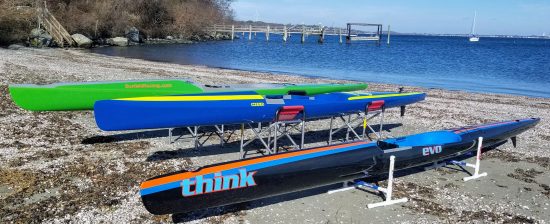
Secondly, I raced the (L2L) 2018 East Coast Surfski Championships on my Ion Elite and did reasonable well based on my training having been interrupted by my new job. During that race Ray Fusco paddling his Swordfish S beat me by over 2 minutes and I made a mental note he was in the Swordfish S. I paddled the first half of this race with Ray.
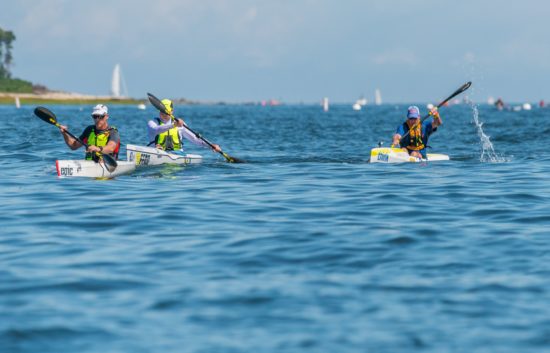
Thirdly, I got a comment on my 2016 Surfski Comparison Chart from Australian paddler, Michael Troth who I don’t know, but he disagreed with how I ranked the Swordfish. That placement was based on the original Swordfish and not the S. However, I replied to Michael that I needed to buy the SFS, review it and see just how good the ski really is.
Fourthly, having read that the Fenn factory in South Africa had a devasting fire, that I needed to buy one very quickly or I may not be able to source one in the foreseeable future. I called Jim of Ocean Paddle Sports East to purchase one and met Jim at Mohegan Sun for easy pickup. Thanks Jim!
It has been a long time since I reviewed a Fenn ski. In the past I reviewed the Glide, Mako 6, Spark and the Mako XT 1G (my first skis ever). I have paddled the Elite and Swordfish 1G many years ago.
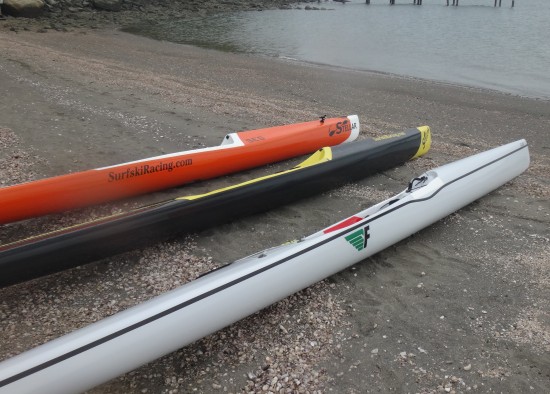
Design Features and Benefits, Old and New
The SFS is 17.7 inches(45 centimeters) wide and 20 feet (6.1 meters) long with average bow rocker compared to the other skis in the intermediate class and its stern rocker beginning mid ship. I bought the Hybrid layup with a stated weight 26 lbs or 11.5 kg. Like many of the new skis that have come to market, it is a medium volume ski with a low profile with little volume in the fore deck therefore it needs a wave deflector in bigger conditions which I added. Note I took off the S decal in Swordfish S, and rearranged the decals to my liking. I wanted a cleaner look. This is the Swordfish S Hybrid.
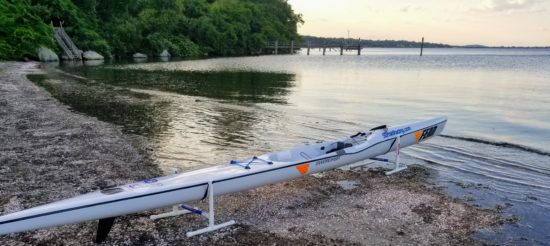
One of the design element that makes the SFS stand out is that the rudder is placed more forward, (35 inches from the stern) which is one reason it steers to perfection. My Stellar SEA at 20 feet also has it rudder placement at 35 inches, while my other 20 foot skis are a few inches more toward the stern. The Fenn skis after all these years, still use cable rudder lines which add to its pinpoint steering. However, the pedal stops require an allen wrench that can easily be attached to the front bungees. A benefit for this type of system is that you can get the exact toe pedal angle you want, but demos can be time consuming compared to other skis that have click and go systems.
Another older design function is the venturis vice a bailer that most all the skis have now. These venturis seem to be placed too far back in the footwell for optium draining. As I recall the older generations of Fenn skis the venturis were more forward and the draining was unimpeded. Having said that, I prefer the venturis over bailers. I dislike having to look at my footwell, see water with a closed bailer and kick it open several times during a race or paddle depending on a particular ski. As most us know by now, many bailers are subject to leaking, failure, etc, that need some maintenance over the years.
Not sure when a dedicated leash attachment was incorporated into the Fenn skis, but we are all thankful for this crucial safety feature. The lower hump is welcomed also since Fenn’s for years had the highest humps in the industry. I had my hump cut down in my Glide years ago. The bucket in the SFS, I found to be very comfortable once I put a seat pad to protect my tailbone. Others have added a seat pad for the same reason. Fortunately the SFS is so stable adding a low profile pad does little to affect this. I also added back bungees which all Fenns are void off and I added footplate pads to avoid slippage and to insulate my feet in the harsh New England winters. The SFS has no handles on the bow, mid ship, or stern like most other intermediate skis, though it does have the handle on the foredeck and a nice bungee system for hydration.
As with most of my skis, handles or not, I add rubber, non-skid for a secure grip that prevents your hand slipping on the gunwale and dropping your ski. This ski came with 7.5 inch nicely shaped rudder for our New England waters, but I couldn’t help myself and ordered two DK rudders, a 6 inch and 7 inch. I have used all three in varying conditions from flat to chaotic and am very pleased with all three rudders now. I did add a weed guard since weeds are commonplace during the summer. I add my standard hydro attachments in the footwell to secure my hydration if I capsize.
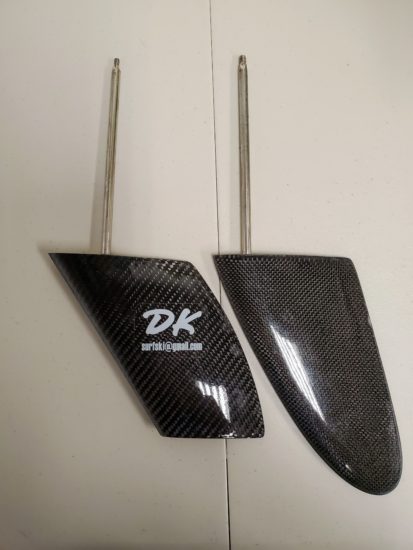
Let’s Talk Performance
So is the SFS that different in a crowded field of excellent intermediate skis of which I have the Stellar SR and Think Evo currently in my garage along with my Ions, SEA, Nelo 560ML, Uno, V10L and Zen? My experience suggest that the SR is the most stable intermediate ski followed by the V10 Sport, SFS, SEI, Evo, Nelo 550. I have paddled briefly the V10 3G and have had feedback that this ski probably falls after the SEI in terms of stability.
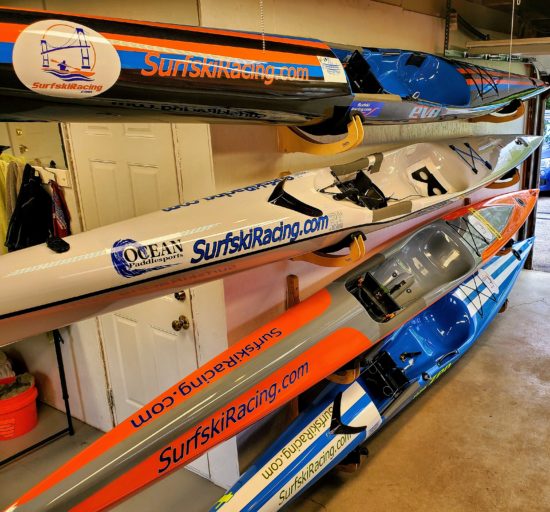
Stability
I paddled the SFS on my home course on the Sakonnet in all conditions from flat to downwind. Just two weeks ago I paddled with a group in Jamestown where one section was the biggest I had paddled in this season. It was very rough! So when I want to find out how stable a ski is in true ocean conditions, I paddle Jamestown, particularly the Ride the Bull course or over to Fort Adams. The section from Fort Adams (entrance to Newport Harbor) to Castle Hill Coast Guard Cove had it all, tide/20 mph SW wind/big boat traffic/refractory waves. We were all relieved to pull in to the cove for a short respite. I had the DK 7 inch rudder which held up fine though the Fenn 7.5 inch would have been welcomed. The SFS performed excellent. I now know why big water paddlers like this ski. It is rock solid in the big stuff. Remember, “We are all products of the waters were train in“.
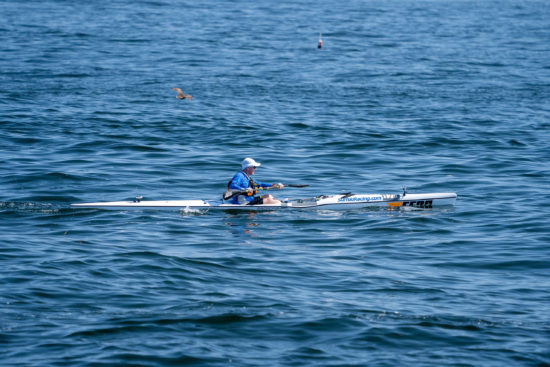
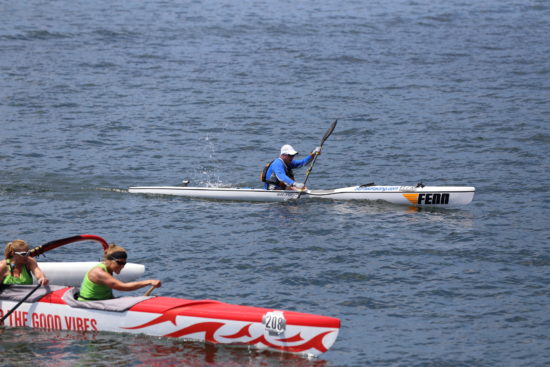
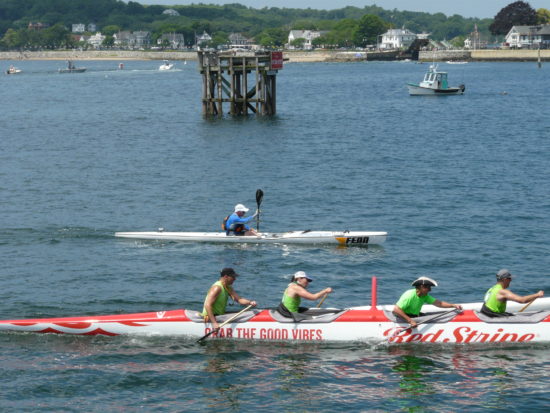
Previous to this paddle, I chose to race the SFS in my biggest race of the year, the 19.5 mile Blackburn Challenge which is a mix of everything in terms of conditions. Knowing I would be reviewing this ski, what better way to get feedback on this ski. Conditions were typical for the Blackburn and I can say that since it was my 16 time racing it. I bonked badly at mile 11, not having eaten enough. So I was extremely glad the SFS was so stable since I had 8.5 miles to go in the undulating waters the Blackburn is known for. Before I bonked I was in my typical race group though working hard in the flatter conditions. So the SFS is predictable, settled, stable and has confidence building characteristics in rough water.
Just a thought on stability when buying skis. I asked a series of qualifying questions when I get contacted on buying skis. Three of those as it relates to stability are:
- What are you paddling now?
- What water are you doing 85% of your training in?
- How many times per week are you paddling?
- What is your goal?
- How old are you?
I was reminded of the last question this weekend when Melissa, a top New England paddler was looking to upgrade to a faster ski. As I recounted to her, she is on the upswing of her paddling career, having paddled ocean kayaks for years in all conditions, she transitioned easily to the SR I sold her a year ago. Due to her overall ocean experience, relative youth, and excellent stability in general, Melissa was able to paddle 10 miles in flat bay conditions in my advanced skis coming off her SR. She has lots of stability and trains in ocean conditions so she opted for the Evo as her one ski to do everything. At some point, like most of us that race, we have one ocean ski and one pure flat water ski.
Compare her trajectory to mine. I was able to race most advanced skis in most waters, until I was in my early 50’s. At this point I slowly began to enjoy more stable surfskis in rough water and I wanted to make sure I could remount them. So age comes into play as it does on all aspects of our lives and with paddling we lose some stability that we enjoyed in previous years.
If you are opened minded, you adjust your training load, do more interval and strength work, lose 10 lbs, get more rest, get a more stable ski and buy a newer flexible shaft paddle to continue to enjoy all the aspects of paddling and racing, paddlers enjoy into our 60’s.
Remounts
While I have not capsized in the Swordfish S or any ski in the last year, I did try remounting this ski. While the gunwales at first glance are not particular high and the seat not that deep, remounting takes some practice. After two successful remounts, hoping to make the process easier, I altered my left hand position from back of the bucket where it is on most skis, to where the hump is. This made getting over the gunwales easier. While you butt is not perfectly aligned with the bucket when you twist to plop down, your butt slides into the bucket. Getting over the gunwale requires more strength than other intermediate skis.
Speed
Once you figure out how stable a ski is for your training/race conditions, speed is the next question for many of us. My quick speed check for all my ski is the .25-.27 pier to pier time trial. There has some variability since I am more rested on some days than others when I do these intervals. In my advanced skis I in the range of 2:05 to 2:13 and 2:11-2:20 for my intermediate skis. I repeat this a few times and use this as a quick reference point.
So I compared the Evo 3G Elite with the standard 7 inch rudder to the Swordfish S with the standard 7.5 inch rudder back to back. Both skis are 26lbs ish. Both skis were almost identical in speed and within the margin of error, 2-3 seconds for each interval. Click on the Laps within Garmin to get the interval times.
The caveat for me is my Evo 3G’s feel faster in longer flatter conditions by comparison despite the above short flat water time trials. I felt this at the Blackburn where there was no downwind and I working a little harder to be in my race group for the first half of the race. I have many years and miles paddling every generation of Evo.
However, the SFS in downwind conditions whether 6 inch wavelets or 2-4 foot seas is ready, willing and capable of hopping on all them and holding the pace. Since the stability/tracking is there, you have to check your GPS to see how fast you are really going. In advanced skis, for paddlers at my level, you sense/feel the speed because as the speed increases, so does the instability in many instances.
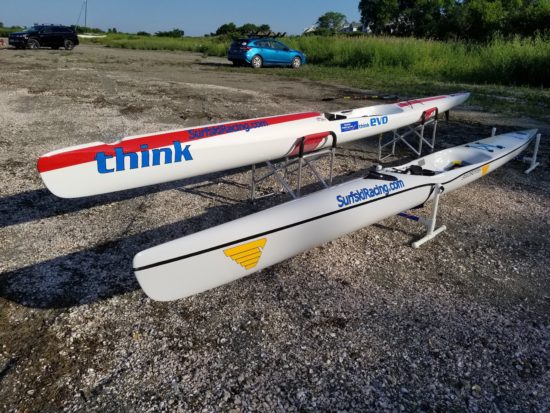
https://connect.garmin.com/modern/activity/3803226954
My next time trial on June 29th was on my 3.23 mile course from Black Point to McCorrie on a perfect downwind day with 2/3 foot seas and 15/20 mph Southwest winds. I clocked one of my fastest time trials ever in any ski (advanced or intermediate) averaging 8 mph. See Link Below.
https://connect.garmin.com/modern/activity/3795933274
My next time trial on August 1st on my 1.62 mile course where I averaged 7.5 mph with the 6 inch rudder. See Link below.
https://connect.garmin.com/modern/activity/3906462939
This week (August 20th) I did another time trial to see if I could replicate the excellent downwind times again. Success! I average 7.4 mph for 1.72. See the link below. Typically these consistent downwind times are reserved for the less stable but faster advanced skis. So this much downwind speed speaks volumes about the Swordfish S and mirrors what others have experienced.
https://connect.garmin.com/modern/activity/3972032376
Fit
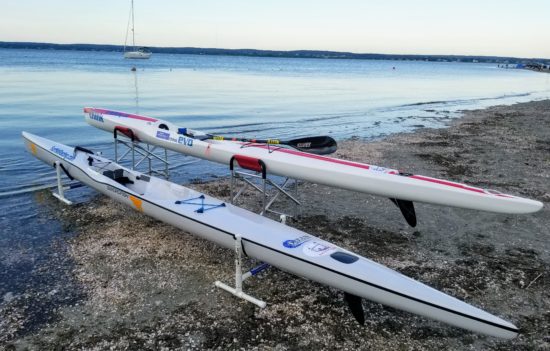
Typically I start with fit since that is the most critical criteria for a paddler. I found the lower hump, bumped out calf area, and moderately deep bucket to be all a plus. I did pad out the sides at the hips for a more secure fit and I added a thin seat pad to relieve the ache of my tailbone. For paddles over 2 hours I need a thicker pad. The ergonomics to maximize leg drive are good too. The footstrap rest lower on the top of your foot than other skis. The bucket size should accommodate most paddlers and with some hip padding fit smaller paddlers or small hipped paddlers like myself.

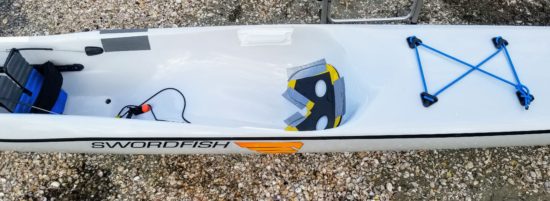
Summary
I am glad I know have a Swordfish S in my garage. Having paddled it in all conditions it is surprising how stable it is in chaotic waters. It is flies downwind with pinpoint steering with minimum side to side movement letting you just focus on catching the next wave. It has good cockpit ergonomics provided you bring your own seat pad. Practice your remounting since it takes more effort than other intermediate skis.
Pros:
1.Superb downwind ski with advanced ski speed and with virtually no side to side movement.
2. Pinpoint steering in all conditions.
3. Very predictable, rock solid stability in chaotic conditions.
4. 20 feet long.
Cons:
1.Remounts require more practice than other intermediate skis.
2. Foot Pedals, rudder alignment require more time to adjust, particularly if demo to others.
3. No Side handles, no end handles, No rear bungees.
4. Material around rudder tubes in rudder compartment is noticeably sub standard in this particular ski.

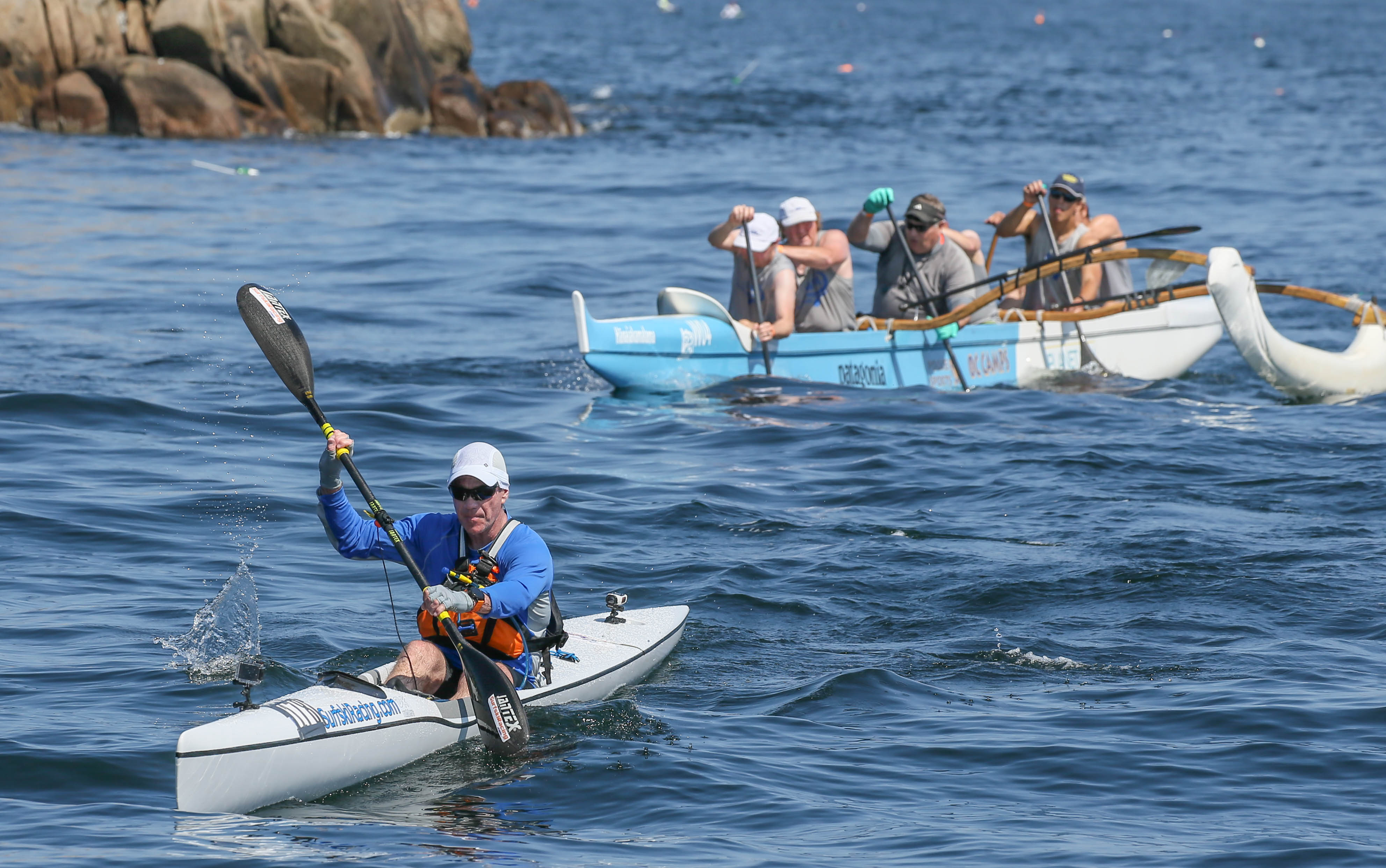
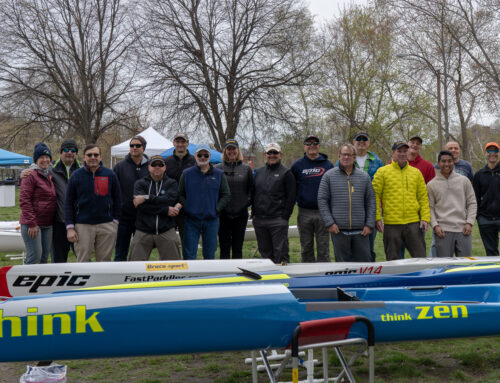
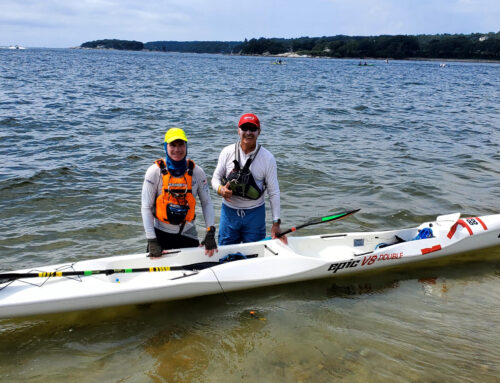
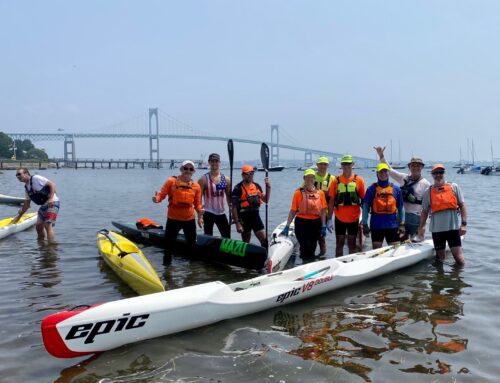
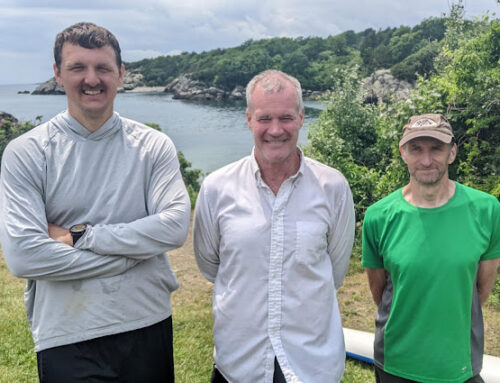
Leave A Comment
You must be logged in to post a comment.